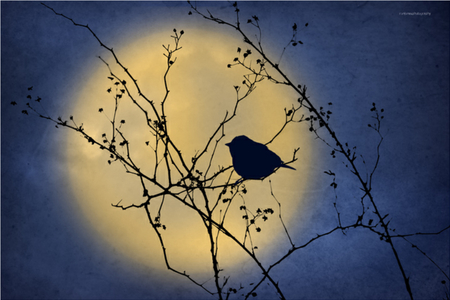Each month Kathleen Clohessy, R.N., offers a new perspective on living with a terminal illness. Kathleen comes to SevenPonds with 25 years experience as a registered nurse caring for families and children facing life-threatening illness. She began her career in the Pediatric Intensive Care Unit at Nassau County Medical Center in New York, and, after relocating to California, spent 15 years as an R.N. and Assistant Nurse Manager at the Pediatric Oncology & Bone Marrow Transplant Unit at Lucille Salter Packard Children’s Hospital at Stanford. She uses her extensive personal knowledge and expertise to enlighten our readers regarding the challenges associated with chronic illness and their profound effects on family relationships and human dynamics.
This is part two of the story of a young boy with leukemia. If you missed part one, please read it here.
Grieve not that I die young. Is it not well to pass away ere life hath lost its brightness? — Lady Flora Hastings

Credit: spinningwebbs.com
Jeffrey was admitted to the hospital many times over the next several months. His leukemia had invaded his central nervous system (the brain and spinal cord), one of the places in the body where cancer cells like to “hide.” Because chemotherapy drugs administered into the bloodstream don’t reach the brain very well, he needed frequent spinal taps so the doctors could administer his medicine directly into the spinal fluid –the liquid that surrounds the spinal cord and the brain. He also received intravenous chemotherapy to kill any stray cancer cells lingering in his bone marrow.
Jeffrey eventually went into remission again, but over the next three years, he relapsed two more times. Each time he came back for more treatment, he looked a little thinner, a little paler, a little bit frailer. But his spirit never wavered, and he never showed any sign of giving up.
Within several months of his last relapse, Jeffrey had stopped responding to his chemotherapy, and the doctors reluctantly told his mom there was nothing more they could do.
But even the strongest young body can only stand so much punishment, and the will to live can only achieve so much. Within several months of his last relapse, Jeffrey had stopped responding to his chemotherapy, and the doctors reluctantly told his mom there was nothing more they could do. She and Jeffrey — now 8 years old — had already agreed that, when the time came, he would die at home. So we began to make preparations for him to be discharged with hospice support.

Credit: ismegawall.blogspot.com
But illness and death don’t always perform according to plan, and in Jeffrey’s case things went terribly awry. He was home for only a few hours when he developed a high fever, uncontrollable vomiting and severe abdominal pain. Panicked, his mother rushed him back to the hospital.
The news she got there was not good.
Jeffrey had typhlitis — an inflammation of the intestines that affects patients whose immune systems are severely compromised. Under the best of circumstances, it is a life-threatening condition that is treated with antibiotics and possibly even surgery. Even in those cases, about half of the patients die. But Jeffrey was already dying: The question facing us now was how to give him what he wanted and deserved — a pain free and peaceful death.
Over the next few days, a battle raged on the pediatric oncology ward.
Over the next few days, a battle raged on the pediatric oncology ward. Doctors don’t give up easily, and there was a push on the part of the medical staff to treat Jeffrey’s typhlitis aggressively, “just in case” he could recover enough to go home. I and the rest of the nursing staff fought hard to give Jeffrey what he told us he wanted when it came his time to die—to be free of the needles and procedures that he had endured without a whimper for nearly five years. Unfortunately, as is usually the case when doctors and nurses clash, the doctors mostly won. Jeffrey was on a morphine drip, but he had tubes in almost every orifice and was still thrashing about in pain.
Meanwhile, Jeffrey’s mother sat at his bedside, torn apart by grief.
It was against this backdrop that I had one of the most profound spiritual experiences of my life.
I had gone home after working the evening shift, exhausted and grieving over the horror that was unfolding in Jeffrey’s room. I took a shower, laid down on my bed and fell immediately asleep. Then, at exactly 3 a.m., I woke up. I opened my eyes, looked at the clock, and caught a glimpse of something out of the corner of my eye. Turning, I saw a face — Jeffrey’s face. But it wasn’t the pale, tortured face of the little boy I had left the night before. This child was at peace, smiling slightly, his eyes closed, those ever-present freckles scattered across his nose.

Credit: religion4all.org
I have asked myself many times since that night if that experience was a dream. But I know with every fiber of my being that it was not. Jeffrey came to me that night to give me a message — to tell me to stop worrying and to stop fighting, because, despite what was going on in his room on the oncology unit, he was OK. His body was still chained to the bed by tubes and wires and the expectations of those who refused to give up. But his spirit was free.
I went back to work the next day, and Jeffrey was still there. I sat down next to his mother and told her about my experience of the night before. We sat there for a long time, not talking, just crying and holding hands. And as we sat there, Jeffrey quietly slipped away.
“We live in deeds, not years; in thoughts, not breaths;
In feelings, not in figures on a dial.
We should count time by heart-throbs. He most lives
Who thinks most—feels the noblest—acts the best. “
~ Philip James Bailey

 When A Child Has A Terminal Illness
When A Child Has A Terminal Illness


 ”The Snow Sister” Directed by Cecilie Askeland Mosli
”The Snow Sister” Directed by Cecilie Askeland Mosli
 First the Wealth Gap, Now the U.S. Has a Growing Health Gap
First the Wealth Gap, Now the U.S. Has a Growing Health Gap
 “Songbird” by Fleetwood Mac
“Songbird” by Fleetwood Mac














